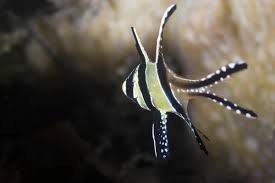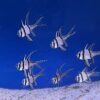Dragons in Mythological Tales of Rebirth and Eternity
Throughout history, dragons have symbolized power, wisdom, and immortality in cultures worldwide. In Chinese mythology, dragons are not merely creatures of destruction but beings of transformation, guardians of eternal cycles, and harbingers of rebirth. Unlike their Western counterparts—often depicted as fire-breathing monsters—Chinese dragons are celestial entities associated with renewal, the passage of time, and spiritual enlightenment.
From ancient Taoist and Buddhist beliefs to folk legends and imperial traditions, dragons have played a key role in stories of resurrection, reincarnation, and the pursuit of eternal life. This article explores how dragons represent rebirth and eternity in mythology, examining their role in creation myths, cycles of nature, spiritual transformation, and divine reincarnation.
1. The Dragon as a Symbol of Rebirth in Creation Myths
a) The Cosmic Dragon and the Birth of the Universe
One of the most famous Chinese creation myths involves Pangu (盘古), the primordial giant who created the universe. According to legend:
- Before creation, the universe was a chaotic cosmic egg in which Pangu slumbered.
- When he awoke, he split the heavens and the earth apart, separating Yin and Yang.
- As Pangu died, his breath became the wind, his eyes became the sun and moon, and his blood transformed into mighty rivers.
- From his spinal cord, the first celestial dragon was born—the embodiment of the eternal flow of energy in the universe.
This myth establishes the dragon as an agent of rebirth, carrying the essence of creation and cosmic renewal. The dragon’s presence in the universe’s origin highlights its role as a force of endless transformation.
b) The Dragon and the Cycle of Time
In Chinese philosophy, time is cyclical rather than linear, and the dragon embodies this eternal cycle. The Lunar Calendar follows twelve animal signs, with the Dragon being the only mythical creature among them. Every 12 years, the Year of the Dragon is believed to bring:
- Renewal of energy, promising transformation and change.
- Auspicious new beginnings, where people seek spiritual growth.
- A rebirth of fortune, as old struggles fade and new opportunities arise.
Thus, in both myth and tradition, the dragon is the guardian of time’s endless rebirth.
2. Dragons and Nature’s Eternal Cycles
a) The Water Dragon: Guardian of Life and Renewal
Unlike Western dragons that breathe fire, Chinese dragons are often associated with water—a symbol of renewal and perpetual flow.
- The Azure Dragon (青龙, Qīnglóng), one of the Four Celestial Beasts, is the guardian of the East and Spring, bringing new life after winter’s death.
- The Dragon King (龙王, Lóngwáng) governs the seas and rivers, ensuring the eternal cycle of rain, drought, and rebirth.
- Farmers pray to dragon deities to bring life-giving rain, reinforcing the idea that dragons restore balance and renew the land.
The water dragon represents how life itself is reborn through natural cycles, mirroring humanity’s own pursuit of transformation.
b) The Phoenix and Dragon: The Eternal Dance of Yin and Yang
In Chinese mythology, the dragon is often paired with the phoenix (凤凰, Fènghuáng)—a legendary bird that dies in fire and is reborn from its ashes. Together, the two creatures represent:
- Dragon (Yang) as the unyielding force of power and creation.
- Phoenix (Yin) as the gentle force of renewal and rebirth.
Their eternal dance symbolizes the balance of destruction and renewal, an endless cycle in which neither force ever truly dies, but instead transforms into another.
3. Dragons in Spiritual Rebirth and Enlightenment
a) The Dragon as a Spiritual Guide in Taoism
In Taoist philosophy, achieving immortality is the highest goal, and dragons are seen as spiritual guides on this journey.
- Taoist practitioners believe that dragons inhabit the celestial realms, guarding secrets of eternal life.
- Ancient Taoist texts describe Daoist sages riding dragons to ascend into immortality, symbolizing leaving behind mortal limitations.
- The Dragon Gate Legend tells of carp leaping over the dragon’s gate (龙门, Lóngmén) and transforming into dragons, representing personal enlightenment and spiritual rebirth.
Taoism teaches that by following the dragon’s wisdom, one can attain inner peace and eternal existence beyond the material world.
b) Dragons in Buddhist Stories of Reincarnation
In Buddhist tradition, dragons are both protectors and teachers, guiding believers through cycles of death and rebirth (Samsara).
- Nāga dragons, found in Buddhist scripture, are divine serpent-like beings who guard sacred texts and relics, ensuring their wisdom survives beyond generations.
- A famous legend tells of a dragon who desired enlightenment. However, since dragons are considered non-human beings, it could not achieve Buddhahood in its form. Through deep meditation and spiritual devotion, the dragon reincarnated as a human monk and eventually reached Nirvana.
This story reflects the Buddhist principle that all beings—no matter their form—can attain spiritual rebirth through wisdom and perseverance.
4. The Imperial Dragon and the Quest for Eternal Rule
a) The Emperor as the “Living Dragon”
In imperial China, the emperor was believed to be the “Son of Heaven” (天子, Tiānzǐ), a divine ruler who wielded the power of dragons. His connection to the dragon symbolized his right to eternal rule.
- The Dragon Robe (龙袍, Lóngpáo) was worn exclusively by the emperor, signifying his immortal authority.
- The Forbidden City (紫禁城, Zǐjìnchéng) is decorated with over 9,000 dragon carvings, reinforcing the belief that the emperor’s power transcended time.
- Many emperors sought alchemy and Taoist rituals to attain actual immortality, believing that dragon energy could grant them eternal life.
Even after death, emperors were buried with dragon symbols, ensuring their spiritual rebirth in the afterlife.
b) Dragon Emblems in Imperial Tombs
Archaeologists have discovered dragon motifs in ancient tombs, reflecting the belief that:
- The dragon carries the emperor’s soul to the heavens, ensuring his spirit never fades.
- Dragon-engraved jade amulets were placed on the deceased’s chest to preserve their life force.
- Dragon murals on tomb walls represented the soul’s ascension into eternity.
Thus, the dragon was not just a royal emblem, but a guardian of eternal existence.
Conclusion: The Timeless Legacy of the Dragon in Rebirth and Eternity
From cosmic creation myths to spiritual enlightenment, nature’s cycles, and imperial dreams of immortality, the dragon has remained a powerful symbol of rebirth and eternity.
Whether guiding souls through reincarnation, bringing renewal to the land, or granting wisdom to those seeking enlightenment, the dragon’s legacy is one of endless transformation.
Even in modern times, the dragon continues to be a symbol of resilience, hope, and renewal, reminding us that through change, we find eternal rebirth.


